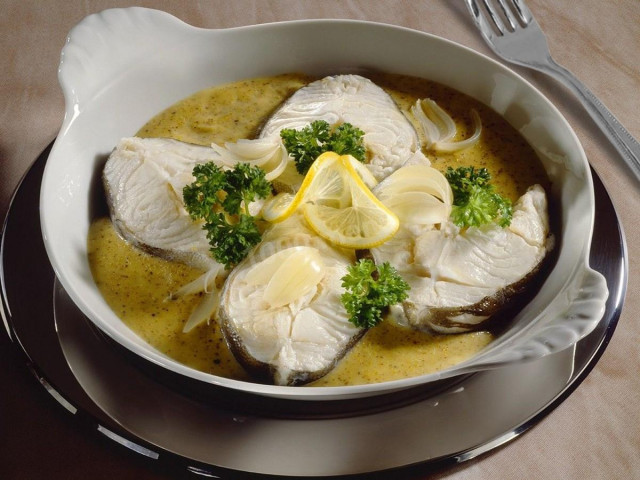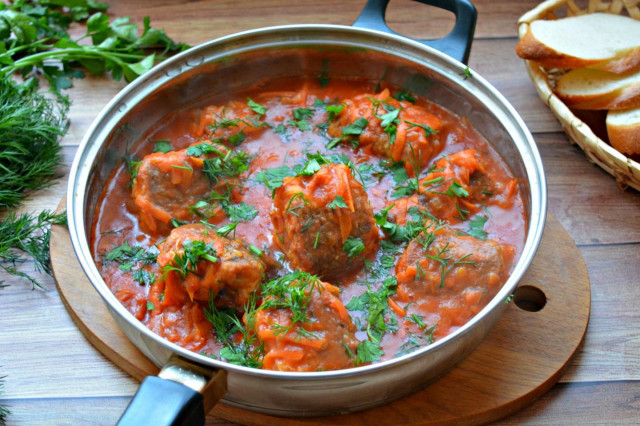Composition / ingredients
Step-by-step cooking
Step 1:
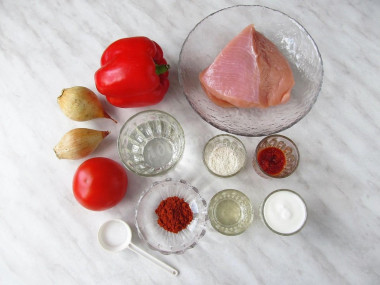
To prepare turkey paprika, you will need: turkey fillet with breast, onion, bell pepper, tomato, tomato paste, water or chicken broth, paprika, salt, vegetable oil, sour cream, flour.
Step 2:
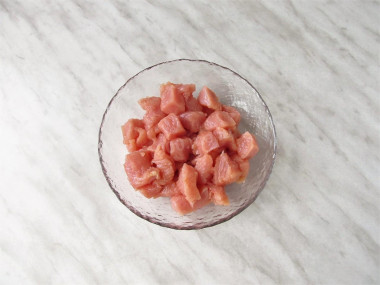
My turkey fillet, dry it. If possible, we clean the films, cut into medium pieces.
Step 3:
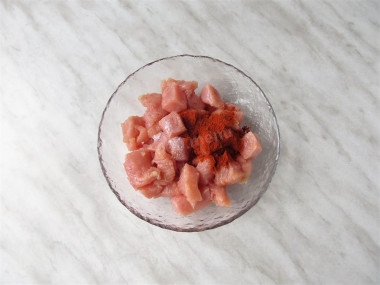
Add ground paprika to the fillet, add a little salt, mix.
Step 4:
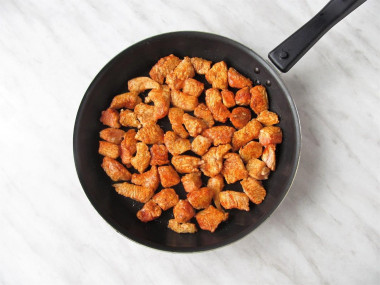
Heat the vegetable oil in a frying pan. Quickly fry the turkey on a fire above average until a golden crust forms. Inside, the pieces should remain damp. We transfer the fried turkey to a separate plate.
Step 5:

Peel the onion, wash it, cut it into small cubes.
Step 6:
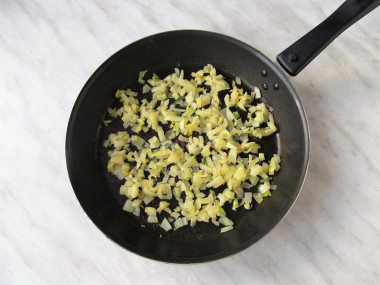
In the same pan, fry the chopped onion until golden brown for 4-5 minutes.
Step 7:

Bulgarian pepper is washed, freed from seeds, cut into medium cubes.
Step 8:

Add pepper to the fried onion and add 3-4 more minutes, stirring.
Step 9:

Pour boiling water over the tomato, remove the skin.
Step 10:
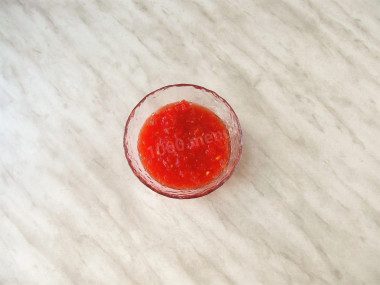
Grate the tomato on a grater.
Step 11:
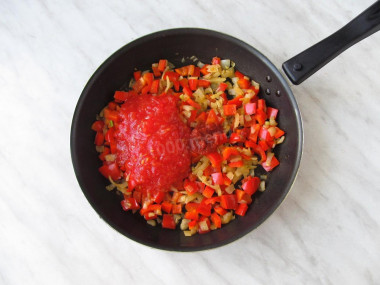
Add tomato mush and tomato paste to the pan to the vegetables, mix.
Step 12:
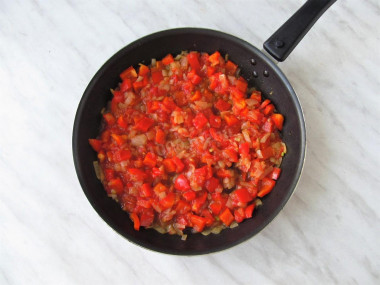
Simmer for 1-2 minutes, stirring constantly.
Step 13:
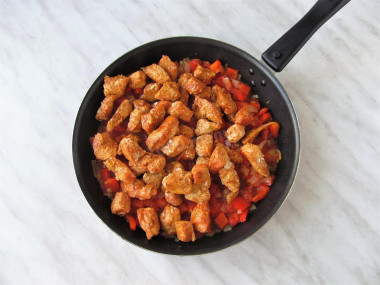
Spread the fried fillet, mix.
Step 14:
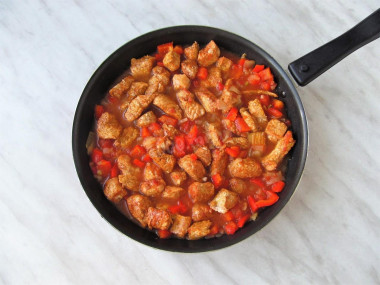
Fill everything with water or broth so that the contents of the pan are completely covered with liquid. Let it boil. Simmer on low heat under the lid for 15-20 minutes. Salt, if desired, you can add red hot pepper.
Step 15:

Separately mix sour cream with flour until the lumps disappear.
Step 16:

Add sour cream to the pan, mix.
Step 17:
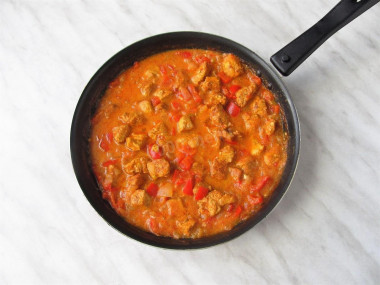
Simmer until sauce thickens for 5 minutes. Turn off the fire. Let stand under the lid for 10-15 minutes.
Step 18:

Serve turkey paprika hot with any side dish. Enjoy your meal!
Paprika is considered to be the national Hungarian spice. It is difficult to imagine Hungarian cuisine without fragrant paprika.
In fact, paprikash is not the name of a particular dish, but a method of cooking white meat. In Hungary, paprikash is called many dishes where meat is cut, flavored with paprika, and sour cream or cream is added to the sauce.
Paprikash can also be fish, chicken, veal or lamb.
An important feature of paprikash is the use of only white, lean meat for cooking.
Caloric content of the products possible in the composition of the dish
- Tomatoes - 23 kcal/100g
- Sour cream with 30% fat content - 340 kcal/100g
- Sour cream of 25 % fat content - 284 kcal/100g
- Sour cream with 20 % fat content - 210 kcal/100g
- Sour cream of 10 % fat content - 115 kcal/100g
- Sour cream - 210 kcal/100g
- Sweet pepper - 27 kcal/100g
- Vegetable oil - 873 kcal/100g
- Tomato paste - 28 kcal/100g
- Salt - 0 kcal/100g
- Water - 0 kcal/100g
- Onion - 41 kcal/100g
- Wheat flour - 325 kcal/100g
- Paprika - 289 kcal/100g
- Turkey fillet - 84 kcal/100g





